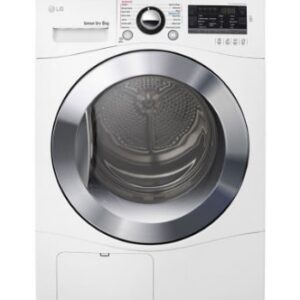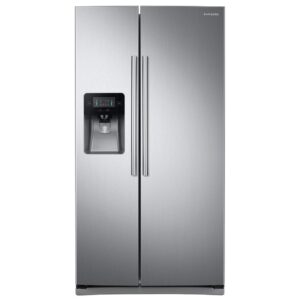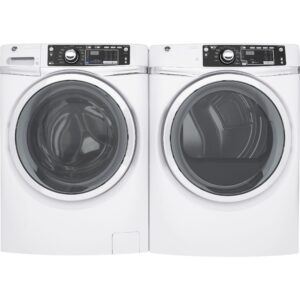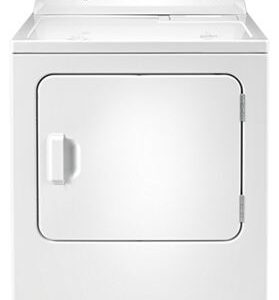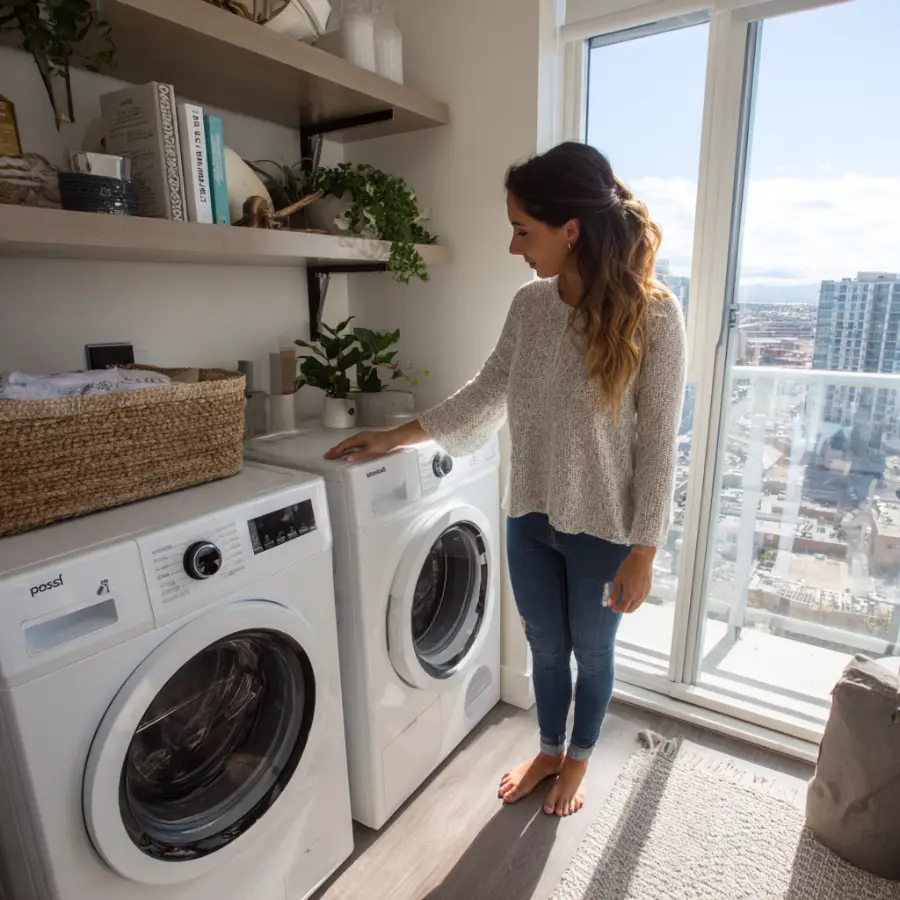Ready to slash your energy bills in half? That’s exactly what modern laundry appliances can do for your home. Take the latest Electrolux washing machines – their smart inverter motors use 50% less energy than traditional models. Pretty impressive, right?
Here’s something every smart homeowner should know: buying your washer and dryer as a set unlocks amazing discounts and deals. Plus, today’s models pack some serious cleaning power. Want your clothes allergen-free? New HygienicCare vapor technology zaps away 99.9% of germs. Looking to save more energy? Heat pump dryers get your clothes perfectly dry while using way less power.
Let’s walk through everything you need to make the right choice for your home and wallet. We’ll cover the best times to buy, money-saving tricks, and common pitfalls to avoid. Whether you’re thinking about replacing both appliances or just one, this guide has got you covered. No complicated jargon – just straight talk about what works best for your needs and budget.
Key Factors When Buying Washer and Dryer Together
Want your laundry setup to work like a charm? Let’s talk about what really matters when picking your washer and dryer units. Here’s a fact that might surprise you – your dryer needs double the capacity of your washer for proper tumbling. Most washers come in sizes from 1.5 to 6 cubic feet, so choose your dryer accordingly.
Matching Capacity and Compatibility
Think of your washer and dryer as dance partners – they need to match! A medium-size washer needs a medium-size dryer buddy for the best results. Just remember – dryers always run a bit bigger to give your clothes enough room to tumble freely.
Installation and Space Requirements
Your laundry room needs some breathing room! Here’s exactly what space you’ll need:
- Side clearance: 25mm (1 inch) on both sides
- Rear clearance: 150mm (5.9 inches) for connections
- Top clearance: 432mm (17 inches) for lid operation
- Front clearance: 50mm (2 inches) for access
Got a spacious laundry room? Lucky you! Side-by-side or stacked configurations each have their sweet spots. Wide spaces work great for side-by-side setups – super easy to load and unload. Living in a cozy apartment? Stack them up! It’s perfect for smaller spaces and compact laundry closets.
Brand Reliability and Warranty Coverage
Let’s talk quality guarantees. Maytag leads the pack with an amazing 10-year limited parts warranty on appliances made after 2017. Ask any repair pro – Whirlpool and LG are the stars of the show. They break down less and cost less to fix. Plus, their washers and dryers play nice together with matching cycle settings.
Here’s a pro tip: read that warranty paperwork carefully. Even top-notch machines might need a fix now and then, so good coverage saves you money down the road. While most brands offer 12-month basic coverage, some throw in extra protection for important parts like motors and drums.
Cost Analysis of Buying as a Set vs Separately
Looking at price tags for laundry appliances? Let’s break down the real costs. Basic standalone washers start at $500 to $600, while premium front-loaders can reach $4,000-$6,000. Good news – dryers are usually cheaper, with compact models starting at just $350.
Bundle Deals and Package Discounts
Smart shoppers know this secret – washer and dryer bundles pack serious savings. Right now, major stores are offering whopping 35% discounts on select sets. Want an even sweeter deal? LG throws in an extra $300 off when you buy their matching pairs.
Hidden Costs to Consider
Don’t let surprise expenses catch you off guard! Here’s your installation cost cheat sheet:
- Already have hookups? $50-$150 for basic setup
- Need new hookups? $500-$2,000
- Gas line installation runs $150-$1,000
- Moving existing hookups costs $200-$500
Your wallet will thank you for checking those energy bills too. Standalone units usually beat combo machines in efficiency ratings. Expect to spend $120 to $240 yearly on operation – that’s about the cost of a few takeout dinners!
Price Comparison Strategies
Want to score the best deals? Mark these money-saving dates on your calendar:
- Memorial Day bargains
- Labor Day steals
- Black Friday bonanzas
- September and October new model clearance
Most families spend $1,000 to $2,300 on standard washer-dryer sets. Here’s a pro tip: track prices for a few weeks before buying. Those “limited-time offers” often stick around longer than advertised. Shop smart, save big!
Smart Money-Saving Strategies
Ready to become a savvy appliance shopper? October and November are your golden months for the best washer and dryer deals. Why? That’s when retailers clear their floors for new models, and prices drop like autumn leaves.
Timing Your Purchase for Maximum Savings
Mark your calendar for these money-saving moments! Holiday weekend sales are pure gold – Memorial Day, Labor Day, and Black Friday can save you up to 40% on last season’s models. Need a specific number? Shoppers save about USD 114 at Home Depot and USD 140 at Best Buy during end-of-month sales.
Negotiating Better Deals
Here’s a secret: 90% of folks who email customer service walk away with better deals. Don’t be shy – try these proven tricks:
- “Could you throw in free delivery and setup?”
- “Your competitor is offering this model for less…”
- “Any upcoming sales I should know about?”
- “What’s your best price on that floor model?”
Rebates and Incentive Programs
Love Energy-efficient appliances? Uncle Sam loves them too! The Inflation Reduction Act puts 30% of efficiency upgrade costs back in your pocket. Living in New York? You’re extra lucky – grab up to USD 840 for heat pump dryers and USD 4,000 for electrical upgrades.
Your local power company wants to help too! Many offer sweet USD 25 rebates on Energy Star appliances. Pro tip: bookmark those manufacturer and utility websites – but don’t dawdle! Most rebates expire 120 days after purchase.
Want to stack those savings even higher? Clever shoppers combine store deals, rebates, and cash-back rewards to slash USD 200 off washer-dryer sets. Bonus tip: run those machines before 4 PM or after 7 PM – when power rates take a nice dip.
What to Look for When Buying Washer and Dryer
Today’s washers and dryers pack serious cleaning power with smart features that actually make sense. Let’s skip the fancy bells and whistles and focus on what really matters for your laundry room.
Essential Features Worth Paying for
Your perfect washer needs three game-changing features: moisture sensors, automatic temperature control, and load-balancing technology. These aren’t just fancy add-ons – they’re your clothes’ best friends. Here’s what makes the difference:
- Smart detergent dispensers that end the guesswork
- Extra rinse options for sensitive skin
- Quick-access doors for that forgotten sock
- Load sensors that prevent washing machine dance parties
- Built-in lighting for late-night laundry sessions
Energy Efficiency Ratings
Numbers don’t lie – Energy Star washers cut energy use by 25% and water consumption by 33% compared to basic models. Want to save even more? Front-load washers are the champions, using 45% less energy and 50% less water than top-loaders.
Yellow EnergyGuide labels are your shopping compass. Keep an eye out for high IMEF and low IWF scores. Heat pump dryers deserve special attention – they slash energy use by 30% compared to regular models.
Future Maintenance Costs
Let’s talk repair costs – because every washer needs some TLC eventually:
- New drum bearings: USD 150-200
- Water valve fixes: USD 160
- Control board issues: USD 200-500
- Door problems: USD 150-400
Quality machines typically serve you faithfully for 8 to 13 years. The secret to a long-lasting relationship? Regular maintenance is key – keep those machines level, don’t stuff them full, and follow the manual’s advice. Your dryer’s biggest fans? Clean lint traps and clear vents!
Common Mistakes to Avoid
Think you’ve found the perfect washer and dryer deal? Hold that thought! Smart homeowners know the price tag is just the beginning. Let’s protect your wallet from those sneaky expenses that love to pop up after purchase.
Overlooking Delivery and Installation Costs
That USD 100 to USD 300 basic installation fee sounds reasonable, right? Watch out – costs can skyrocket to USD 2,000 when your home needs extra work. Before signing that sales slip, check these potential budget-busters:
- Water line updates
- Electrical panel tweaks
- Proper venting setup
- Gas connection work
Ignoring Energy Consumption Differences
Your new appliances might be hungry power-eaters! Expect USD 120 to USD 240 in yearly operating costs. Those dryers? Real energy champs, gobbling up 250 to 1,000 kWh every year. Here’s a shocking fact – Americans pour USD 9 billion into drying clothes annually.
The real story behind those power bills:
- Long drying cycles could cost you USD 260-400 yearly
- Poor efficiency cuts your machine’s life in half
- Dryers need special 240-volt circuits – double the usual power draw
Not Researching Warranty Terms
Manufacturer warranties sound great in the store, but read that fine print! They cover factory defects but won’t help if your teenager overloads the washer. Most brands offer one year of coverage, with some parts getting extra protection.
Your warranty checklist should include:
- When coverage starts and ends
- What’s included in repairs
- How to register your machines
- Who can fix your appliances
Quality washers and dryers cost USD 800 to USD 1,500 – that’s serious money! Think carefully about extended coverage, considering repair costs and that 8 to 13-year lifespan. Remember, the best warranty is the one you never need to use!
Conclusion
Ready to make a smart laundry room investment? Bundle deals, rebates, and seasonal sales can put top-quality appliances within reach. Smart shoppers who wait for Black Friday or Memorial Day score up to 40% off their dream machines. Plus, those Energy Star certified washers aren’t just good for the planet – they slash energy use by 25% and water consumption by 33%.
Your perfect washer and dryer match starts with homework. Check those installation specs, crunch the energy numbers, and read warranty terms like your wallet depends on it – because it does! Take care of your machines, and they’ll return the favor, running strong well beyond the typical 8-13 year lifespan.
Not quite ready to buy? Here’s good news for Texas residents – A&A Appliance Leasing offers hassle-free rentals with quick delivery and no credit checks. It’s a perfect way to test-drive quality appliances while keeping your options open.
Remember, your perfect laundry solution depends on your unique situation – space, budget, and cleaning needs all matter. Take your time, compare your options, and dig into those energy ratings and warranty details. A little patience now means years of trouble-free laundry days ahead!
FAQs
Q1. Is it better to buy a washer and dryer together or separately? Buying a washer and dryer set together often offers better discounts and ensures compatibility. However, if one appliance is still functioning well, it may be more cost-effective to replace only the faulty unit. Consider your specific needs, budget, and space constraints when making this decision.
Q2. When is the best time to purchase a washer and dryer? The best time to buy washers and dryers is typically during major sales events like Black Friday, Memorial Day, and Labor Day. Additionally, September and October are good months as manufacturers release new models, leading to discounts on older inventory.
Q3. How can I save money when buying a washer and dryer? To save money, look for bundle deals, use price matching, ask about floor models or scratch-and-dent discounts, and check for rebates from manufacturers and utility companies. Also, consider shopping through cash-back portals and timing your purchase during major sales events.
Q4. What features should I prioritize when buying a washer and dryer? Focus on energy efficiency ratings, capacity that matches your needs, and essential features like moisture sensors and automatic temperature control. Look for Energy Star certified models, which use significantly less energy and water than standard units.
Q5. How long do washers and dryers typically last? Quality washers and dryers generally last between 8 to 13 years. However, with proper maintenance, including regular cleaning and following manufacturer guidelines, you may be able to extend their lifespan even further.



